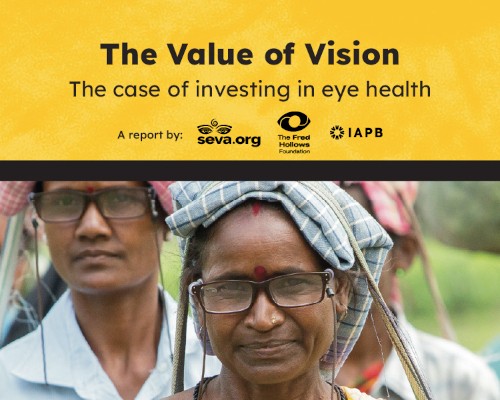Industry News
Investing in Eye Health Delivers Powerful Economic and Social Returns
 A landmark global study released this week by the International Agency for the Prevention of Blindness (IAPB), in partnership with the Seva Foundation and the Fred Hollows Foundation, claims that every US $1 (approximately A$1.50) invested in eye health could deliver a return of US $28 (≈ A$42) over time.
A landmark global study released this week by the International Agency for the Prevention of Blindness (IAPB), in partnership with the Seva Foundation and the Fred Hollows Foundation, claims that every US $1 (approximately A$1.50) invested in eye health could deliver a return of US $28 (≈ A$42) over time.
The report, titled The Value of Vision, was launched in New York in conjunction with the United Nations General Assembly and argues that prioritising eye care is not just a public health imperative but a compelling economic strategy.
Key Findings & Economic Implications
-
Massive returns on modest investments
The analysis suggests that a cumulative investment of US $7.1 billion into six priority eye health interventions by 2030 could generate US $199 billion in returns. Beyond 2030, scaling further could unlock up to US $447 billion annually in economic benefits. -
Societal gains across sectors
The report quantifies collateral benefits including:-
Up to 13 million more years of schooling
-
22 million additional people entering the workforce
-
Relief from 304 million unpaid caregiver years (largely borne by women)
-
-
Tackling avoidable vision loss in low- and middle-income countries (LMICs)
Nearly 1 billion people in LMICs live with vision impairment that could be prevented or treated. The report warns that demographic shifts (ageing) and increased screen usage heighten the urgency of addressing sight loss.
Six Priority Interventions
The report emphasises six scalable strategies that governments and development agencies should champion:
-
Community-based screening
Leverage existing infrastructure to test school-age children, adults over 40, and professional drivers. -
On-the-spot provision of reading glasses
After screening, immediately distribute ready-made glasses where needed. -
Workforce expansion and technology investment
Train more eye health professionals, adopt new tech to increase efficiency. -
Enhancing surgical throughput and workflows
Optimize processes to increase cataract and other eye surgeries by 40–50 %. -
Removing access barriers
Address cost, geographic distance, social stigma and information gaps that discourage people from seeking care. -
Improving cataract surgery quality and standards
Through better training, adoption of biometry, and stronger post-operative care protocols.
While The Value of Vision focuses predominantly on LMICs, the findings carry strong relevance for Australian health planners, insurers, NGOs and commercial players in eye care and vision technologies:
-
Preventive ROI lens
Australia operates a relatively advanced eye health system, but the principle remains: preventive programmes (screening, early refractive correction) often cost far less than managing advanced vision loss and its downstream social costs. -
Regional development & aid strategies
As a major development donor in the Indo-Pacific, Australia may consider aligning aid and health diplomacy investments with eye health, especially in neighbouring Pacific and Southeast Asian nations. -
Innovation opportunities for industry
The target interventions open pathways for private sector involvement: low-cost screening tools, tele-ophthalmology platforms, mass-produced reading glasses, AI for diagnosis, surgical workflow optimization, etc. -
Integration with broader health & ageing agendas
Vision care dovetails with chronic disease management (e.g. diabetes, hypertension) and aged care. Better eye health strengthens education, workforce participation, and social inclusion.
At the UN launch, Antigua and Barbuda’s Prime Minister Gaston Browne reiterated that eye health solutions are already available and affordable — what’s lacking is political will and integration into national systems.
IAPB CEO Peter Holland urged cross-sector collaboration, citing persistent silos, stigma, and fragmented services as major obstacles.
The report also announced a Global Eye Health Summit in 2026, which will bring together governments, multilateral agencies, civil society and private sector actors to catalyse commitments and share progress.



